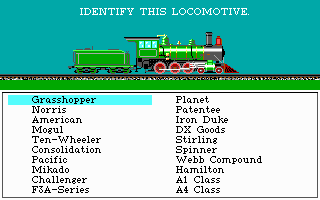a "Phoenix Pinion." A pinion (a word I learned from Elden Ring, of all things) being part of a wing, the terminal feathers on it used in flight. So you might think of it as "Phoenix Down But More." I assume this means it will do something related to but better than a Phoenix Down, like raising someone with full HP, or casting Reraise on them. There are very strong odds I forget about its existence entirely.
Don't forget about it, the Phoenix Pinion is a very strong contender for the title of the best item in the game (other contenders being the Soul of Thamasa, the Tri-Star, the Energy Crystal, the Rosetta Stone, the Status Guard and the Dark Matter, plus the impossible-to-obtain-without-pocketstation Ribbon and the "can be refined into half of the above plus other useful stuff if acquired in sufficient quantities" Cursed Spike), but only if you use it. Using it activates an important flag you'll be glad to have turned on.
Really, genuinely, use it at the first opportunity - you don't even need to save it for a boss or wait to have a character knocked out to use it, just get into battle with something and use it. You won't regret it. Note that you can acquire more than one, in which case it's fair and probably smart to hoard any copies after the first to use tactically, but you really, really should use your first copy as soon as possible. Explaining why it's a spoiler, but using it as soon as possible (and saving, so you don't accidentally erase the trigger for having used it once) is really worth it.
And that is - almost - our entire visit to the Shumi Village.
You're actually missing the second leg of the sidequest; if you go back to talk with the Attendant, you can help him out, although it will eventually require sailing to FH to talk with the Grease Monkey. There's a tiny bit of lore and another item (nearly as valuable as the Phoenix Pinion!) for you if you can complete it. And then, coming back to the village later (you need to trigger a particular plot event first) will reward you with a small extra scene, too - no more prizes though.
I will say that there are no new cards to miss out on until you progress the plot, but a lot of previous ones you can go back to if you want.
This is false; the most important card sidequest in the game is now available, and it is entirely located inside Balamb Garden, so now is the absolutely best time to play it. It's not even that difficult to complete (it just involve playing cards with every single person in the Garden until you trigger the right flags), at least until you need to do the random and unexpected thing to finally find the last opponent. That one isn't influenced by RNG at all (well, as long as the Garden hasn't had the "random" rule activated), which is why imagine the other quest you're talking about is actually the
Card Queen quest? That one does have a bit of randomness to it, but like most things Triple Triad, it can be worked around by save-scumming.
No seriously Ultima is ridiculously useful as a Junction spell, pretty sure it clocks in as best in class for most junctions. Wouldn't be surprised if min-max playthroughs screw around here for a while just to get 300 copies of Ultima and buff up the party.
As
@RubberBandMan pointed out, the usual suggestion is to check back at the Shumi Village regularly. It's also not really that important to get to 100 on one character, much less the whole team, at this point in the game; 30 Stock of Ultima is plenty, and 50 would be enough to overtake every non-endgame junction into whatever stat you want to boost.
Consider that 100 Stock of Firaga boost STR and MAG by +30, which Ultima can match at 30 Stock, and Tornado, which is in the tier of power above Firaga, can boost STR by 48 and MAG by 42 at 100 Stock, both of which Ultima can beat at 49 Stock (43 for MAG). Of course, it is also the most powerful attack spell in the game; if you have a mage character and aren't casting Ultima, you're handicapping your damage potential, but to be fair most enemies don't actually need that much firepower to take down anyway.
And now, some more translation notes:
- On the date, after the greetings Rinoa stops Squall's reaction to her "you're looking down" with "Don't say you're sorry, please", instead of the "are you a teenager or not" she uses in English, which feels both like a non-sequitur from her "you're looking down" opener and also a bit more patronizing. And this references how Squall is often apologizing to people whenever they comment on him not being happy, so her anticipating him doing that here shows she's started to understand him, which I think helps in building up the romance. Squall then goes on to think "Sorry", without saying it out loud, which proves she had, in fact, anticipated him correctly; in English he just repeats that he's tired, something he'd already thought to himself before.
- Once the discussion properly starts, it follows the English version almost exactly, at least in the Good variant of the scene; there's a few differences in word choice, but it changes neither the message nor the meaning of the scene, with Rinoa telling Squall that the risk of losing people in the future is no reason not to enjoy the present, and that they all will be there for him when he needs them.
- The Shumi sidequest follows the exact same beats as the English versions, with no real changes to the dialogue.

